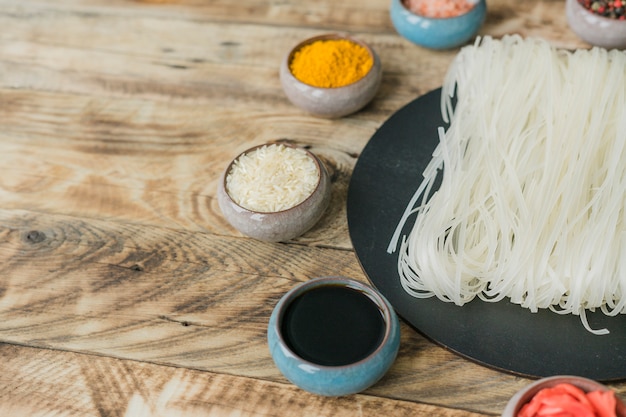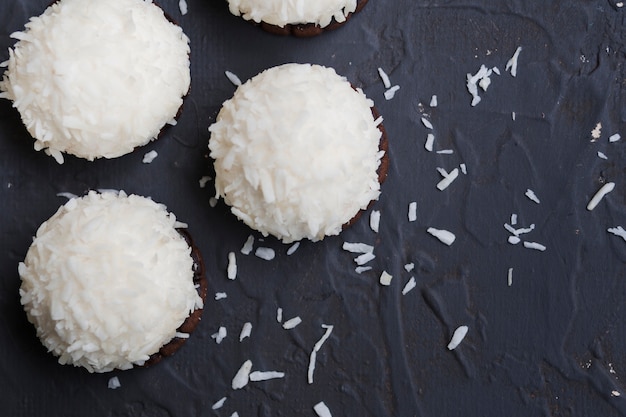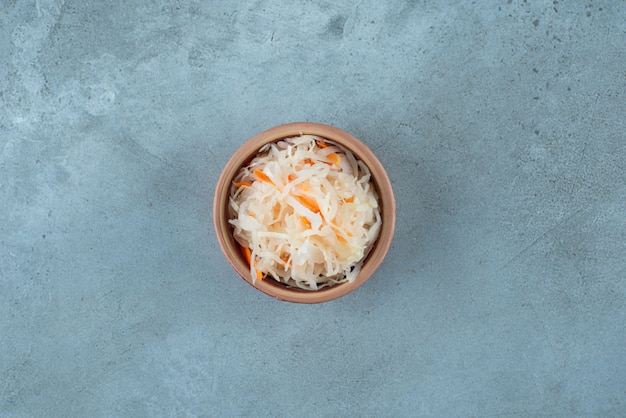jasmine rice, with its delicate floral aroma and fluffy texture, is a true culinary treasure. It's the backbone of countless Asian dishes, adding a touch of elegance and comfort to every meal. But let’s be honest, cooking perfect jasmine rice isn't always a breeze. I've had my fair share of sticky messes and dry, crumbly disasters. But through trial and error, I've finally cracked the code.
In this guide, I'll share my foolproof method for achieving consistently perfect jasmine rice, along with my personal tips and tricks I’ve picked up over the years. Ready to elevate your rice game? Let's get cooking!
Part 1: choosing the right rice

The Importance of Quality
The foundation of any great dish is using the right ingredients. And when it comes to jasmine rice, quality matters. The perfect grain will have a long, slender shape and a slightly translucent appearance, almost like polished ivory. Avoid rice that looks broken or discolored.
thai jasmine rice is widely considered the gold standard. Its distinct aroma and fluffy texture are unmatched. Look for it in Asian supermarkets, often labelled "hom mali" or "fragrant rice."
Storing Rice for Freshness
Once you’ve got your precious jasmine rice, treat it with care. Store it in an airtight container, preferably in a cool, dark cupboard. This will help preserve its flavour and prevent it from absorbing unwanted smells. Remember, fresh rice cooks up better and tastes more delicious.
Part 2: The Art of PreppingRinsing Away Excess Starch
Before you even think about cooking, give your jasmine rice a good rinse. This might sound like a tedious step, but it's crucial for preventing sticky rice. Excess starch can cause clumps and a less-than-ideal texture.
Here’s how to do it: Pour the rice into a fine-mesh sieve and hold it under cold running water. Gently swirl the rice around, allowing the water to flow through it. Continue rinsing until the water runs clear. This indicates that most of the excess starch has been washed away.
The Secret to Soaking
Now, for a little trick I learned from my grandmother: soaking the rice. This step is optional, but I highly recommend it for a truly exceptional result. After rinsing, soak the rice in cold water for 30 minutes. This allows the grains to absorb water more evenly, creating a fluffier, more consistent texture. It's like giving your rice a little spa day before its big moment.
Part 3: Mastering the Cooking Technique

Finding the Right Ratio
The key to perfect jasmine rice is finding the perfect balance between rice and water. I've experimented with various ratios over the years, and I've found that 1 cup of jasmine rice to 1.5 cups of water consistently delivers the best results.
The Power of Salt
Don't underestimate the power of a pinch of salt! It enhances the natural flavour of the rice, making it taste even more delicious. Add a small amount of salt to the water before you start cooking.
The Perfect Pot
Choose a pot with a tight-fitting lid. The lid is crucial for creating steam, which is essential for perfectly cooked rice. A heavy-bottomed pot, like a cast iron or stainless steel pot, is ideal because it distributes heat evenly.
Boiling, Simmering, and Steaming
Here’s the breakdown of the cooking process:
- Bring the water to a rolling boil over high heat. You'll know it's ready when the bubbles are popping like crazy.
- Once the water is boiling, gently stir in the rice.
- Reduce the heat to low and cover the pot tightly with the lid.
- Let the rice simmer for 15 minutes. You want to hear a gentle simmering sound, not a furious bubbling.
- Turn off the heat and let the rice rest, covered, for another 5-10 minutes. This allows the rice to absorb the remaining water and create that perfect fluffy texture.
Fluffing Up Your Culinary Creation
After the resting time, gently fluff the rice with a fork. It should be light and airy, not sticky or clumpy. If it's still a little wet, let it rest for a few more minutes.
Part 4: Serving with Flair

Keeping the Rice Warm and Delicious
To keep your jasmine rice warm and fluffy, transfer it to a serving bowl and cover it with a clean kitchen towel. The towel traps the heat and prevents the rice from drying out. This method keeps the rice warm and inviting for about 30 minutes.
Endless Pairing Possibilities
Jasmine rice is a true culinary chameleon, perfectly complementing a wide range of dishes. It's the perfect accompaniment for stir-fries, curries, grilled meats, seafood, and even vegetarian dishes.
Part 5: Tweaking the Technique for Perfection
The Right Pot Matters
While any pot with a tight-fitting lid will work, a dedicated rice cooker can be a game-changer. Rice cookers are specifically designed for perfectly cooked rice, often with settings for different rice types.
Timing is Everything
Overcooking jasmine rice will result in a mushy texture. The 15-minute simmer time is usually spot on, but you might need to adjust it slightly depending on the amount of rice and your stove’s heat.
Adding a Pinch of Personality
Don’t be afraid to experiment with flavor! A pinch of turmeric, ginger, or garlic added to the cooking water can subtly enhance the rice’s flavour.
Preventing Sticky Rice
If your rice is sticking together, it might be due to overcooking or using too much water. Make sure you rinse the rice thoroughly and use the correct water-to-rice ratio.
Part 6: Troubleshooting Common Rice Mishaps
Dry and Crumbly Rice
This usually happens when you don't use enough water. The next time, add a little more water and simmer the rice for a minute or two longer. You can also experiment with soaking the rice for a longer period.
Sticky and Clumpy Rice
Overcooked rice or too much starch can lead to sticky rice. Make sure you rinse the rice thoroughly and stick to the correct cooking time.
Burnt Rice
Burnt rice happens when the rice sticks to the bottom of the pot. This usually occurs when the heat is too high or you don't stir the rice during the initial boiling phase.
Uneven Texture
If the texture of your rice is uneven, it might be because the rice wasn’t evenly distributed in the pot or it wasn't cooked for long enough. Make sure the rice is spread evenly and cook it for the full 15 minutes.
Part 7: Frequently Asked Rice Questions
What is the difference between jasmine rice and basmati rice?
Both jasmine and basmati rice are long-grain varieties, but they have distinctive characteristics. Jasmine rice has a more pronounced floral aroma and a slightly sticky texture. Basmati rice, on the other hand, is known for its nutty flavour and its tendency to stay fluffy and separate after cooking.
Can I substitute jasmine rice with another type of rice?
You can certainly try substituting jasmine rice with another variety, but you might need to adjust the cooking time and water ratio. For example, brown rice requires a longer cooking time and more water than white rice.
Can I cook jasmine rice in a rice cooker?
Absolutely! Rice cookers are designed for cooking rice, and they often have specific settings for jasmine rice. Just follow the manufacturer’s instructions and adjust the water ratio according to the instructions.
How long can I store cooked jasmine rice in the fridge?
Cooked jasmine rice can be stored in the refrigerator for up to 3-4 days. Make sure to store it in an airtight container to prevent it from drying out and absorbing other flavours.
How can I reheat jasmine rice?
The best way to reheat jasmine rice is in the microwave. Add a tablespoon of water to the rice and cover it with a damp paper towel. Microwave on high for 1-2 minutes, until heated through.
Part 8: Expanding Your Rice Horizons
Delicious rice recipes Galore
Once you've mastered the art of cooking perfect jasmine rice, it's time to explore the endless possibilities of this versatile ingredient. There are countless delicious recipes online and in cookbooks, featuring jasmine rice as the star ingredient.
rice salads for Light and Refreshing Meals
Jasmine rice is a wonderful base for refreshing rice salads. Toss it with chopped vegetables, herbs, and a tangy dressing for a light and satisfying meal.
rice bowls for Endless Customization
Rice bowls are a popular and customizable meal option. Start with a base of fluffy jasmine rice, then pile on your favourite toppings, such as grilled meats, vegetables, tofu, or a poached egg.
Mastering the art of cooking perfect jasmine rice opens up a world of culinary possibilities. With practice, patience, and a dash of creativity, you’ll be whipping up delicious rice dishes in no time. Happy cooking!
Part 9: Bonus Tips
Here are a few extra tips that may help you achieve perfect jasmine rice every time:
- Use filtered water. Tap water can sometimes contain impurities that can affect the taste and texture of rice.
- Don't over-stir. Stirring the rice too much can break the grains and create a sticky texture. Just give it a gentle stir at the beginning to ensure the rice is evenly distributed.
- Experiment with different cooking methods. You can also try cooking jasmine rice in a skillet or using a steamer.
- Keep it simple. Sometimes the best recipes are the simplest. Don't be afraid to experiment with different seasonings and toppings, but remember that jasmine rice shines on its own.
Now, go forth and create culinary magic with your perfectly cooked jasmine rice. Bon appétit!
Everyone is watching

Prime Rib Roast Cooking Time Chart: Per Pound Guide
Cooking TipsPrime rib roast. Just the name conjures images of lavish dinners, crackling fires, and hearty laughter. It’s ...

How Long to Bake Potatoes in the Oven (Perfect Every Time)
Cooking TipsBaked potatoes are a staple in my kitchen. They're incredibly versatile, delicious, and surprisingly easy to m...

Perfect Rice Every Time: The Ultimate Guide to Cooking Rice
Cooking TipsAs a self-proclaimed foodie, I've always been a bit obsessed with rice. It's the foundation of countless cuisi...

The Ultimate Guide to Cooking Asparagus: Tips, Techniques, and Recipes
Cooking TipsAsparagus. The mere mention of this spring delicacy conjures up images of vibrant green spears, crisp and burs...

Ultimate Guide to Cooking the Perfect Thanksgiving Turkey
Cooking TipsThanksgiving. Just the word conjures up images of overflowing tables laden with delicious food, the scent of r...
